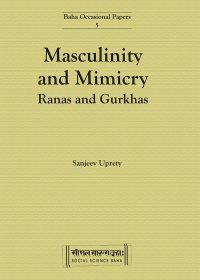Publications
Masculinity and Mimicry: Ranas and Gurkhas
In this paper, I study the constructions of the masculinity of Gurkha soldiers in British representations and compare such constructions with representations of the masculinities of the two most powerful and influential Rana prime ministers, Jung Bahadur Rana and his 20th-century successor, Chandra Shumsher Rana, both of whom visited England, in 1850-1 and 1908, respectively. Arguing that the pre-modern oriental masculinity of Jung Bahadur and the imperial, anglicised masculinity of Chandra Shumsher were defined against the effeminacy of the Indians as well as the Shah kings of Nepal (as also the ‘boy scout’ young adult masculinity of the Gurkha soldiers), I contend that an analysis of the masculinities of these Rana rulers allows us to understand the cultural shifts that shaped the constructions of Nepali masculinities in the first half of the 20th century. In particular, I analyse the representations of Jung Bahadur’s manhood in the 1982 translation of Jung Bahadur ko Belait Yatra (Jung Bahadur’s Travel to Britain) by John Whelpton, a text that also includes the mid-19th century portrayals of Jung Bahadur and his entourage in such European newspapers as The Morning Post, The Times, The Illustrated London News, and Midland Counties Herald. In addition, I examine Perceval Landon’s two-volume account of Nepal’s history – written under the patronage of Chandra Shumsher and first published in 1928 – which describes, among other things, the contrasting masculinities of Jung Bahadur and Chandra Shumsher Rana.
masculinity_and_mimicry
